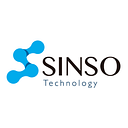As a Web3 developer, you must be familiar with EVM and well-known public chains, like Ethereum and Polygon, which are the classic infrastructures that any motivated Web3 developer should command. Recently, the boundaries of EVM applications have been greatly extended through the proliferation of application scenarios, such as the emergence of the DID racetrack or the hot controversial concepts such as “Soulbound Tokens (SBT)”.
AmStar is the engine of SINSO ecology (as Layer 1). First and foremost, AmStar provides the basis for applications to build in SINSO ecology. The EVM environment provided by AmStar makes it possible to flexibly deploy Metaverse applications. Meanwhile, AmStar will creatively combine EVM and content addressing in distributed storage, specifically conducting an upgrade on Metaverse assets through added NFT programmability.
Positioning of AmStar
AmStar focuses on data-oriented programmability. As we all know, EVM is not a single computer or server in the traditional sense. Instead, it consists of a whole blockchain network. SINSO has built a distributed cache network with more than 9000 nodes, with its incentive model running on the AmStar Chain. It can be understood that AmStar is running a “meter program” for SINSO Distributed Cache Network. As a core component of SINSO, AmStar provides a more flexible and efficient operating environment with lower costs. With further development, AmStar will provide a data-oriented programmable EVM environment.
AmStar is Fully Compatible with Solidity
Ethereum has the most enlightening EVM with the world’s biggest ecology. Thus Solidity, as the language for compiling EVM, has broad popular support. Considering the BSC has smart contract capabilities and is compatible with EVM, AmStar has maximum compatibility and adaptation. The design goal of AmStar is to ensure high throughput while introducing a decentralized ecosystem. Therefore, smart contracts for data manipulation are deployed on the AmStar Chain to ensure DAPPs that value the security of Defi assets can keep the core code in Ethereum and BSC unchanged. Such an application pattern is reminiscent of Web2 programs where SQL is used as a data extension script, only for database operations. AmStar currently uses a POS consensus protocol, so we need to strike a balance between efficiency and security levels. Of course, in special scenarios, we can deploy all Solidity on the AmStar Chain to maximize the advantage of low gas consumption.
Advantages of AmStar in Data Processing Scenarios
Executing contracts on the AmStar Chain does not need cross-chain conversion, making the direct manipulation of SINSO Getway smoother and more convenient — especially for DAPPs with strong data processing requirements. AmStar will incorporate with the Virtual Machine launched by Filecoin (FVM) and work as a sidechain of FVM to drive more applications to deploy as data-programmable DAPPs. Whereas FVM is still in the beta phase, the AmStar Chain will follow closely to provide complete supporting solutions. Filecoin, as a robust network that can access NFTs, public datasets, as well as Webs and Metaverse assets through verifiable storage, will unlock greater value and potential by introducing the general smart contract programming functions. Architecting the computing layer on top of the storage layer also provides trustless interoperability and integration across chains. With support for emulating external runtimes, Filecoin first introduced EVM (Ethereum Virtual Machine) compatibility. The main reason behind this is that the Filecoin developer community requires FVM support for EVM/Solidity to ensure minimal or zero changes to source codes. The same issue of compatibility also goes for AmStar.
Based on the fact that AmStar will possess all the features of Filecoin Virtual Machine, it will enable building new DAPPs in the following scenarios:
1. It is very important to perform decentralized computing on the stored data, which means, conducting decentralized computing directly in the space where the data is stored without transferring data. The stored data content can be replaced while keeping the original sector unchanged — When data is stored to SINSO Getway, it can further be stored in the Filecoin main network, the cold storage layer, while being verified through CID.
2. To save Crowdfunding Datasets — Important social data comes from individuals, such as travel statistics, and global temperature records.
3. Smarter storage marketplace — An example can be to dynamically price storage by time, replication level, or regional availability.
4. Intergenerational storage and permanent custody — To store data that needs to be passed down through generations.
5. To create Data(-centric) DAO and enable the tokenization of Datasets — Establish an economic model for the tokenization of data storage, and form a DAO to calculate and coordinate the model. By pooling the resources of individuals and organizations, people will be able to incentivize the preservation, management, augmentation, and processing of shared/public datasets. Data DAOs price services in units of tokens and NFTs, and trade these tokens to request services, grant access, and more.
6. Local storage of NFTs — Store NFT contents with a registry tracking the contents.
7. Time-locked data retrieval — The datasets will be unlocked only if the company discloses the results.
8. Mortgage Loan — Providing loans to storage providers when they accept trading initiated by other users with SINSO tokens at a certain time.
In conclusion, AmStar can be a potent weapon for SINSO to extend the boundaries of decentralized applications. It provides so much imaginary space for both storage providers as well as Web3 developers. For a considerable period of time, SINSO will render enough premiums to the developers’ community to attract more joining of first-class DAPPs.
